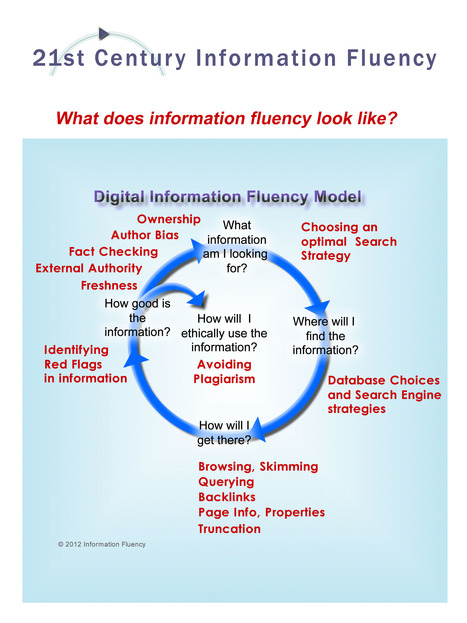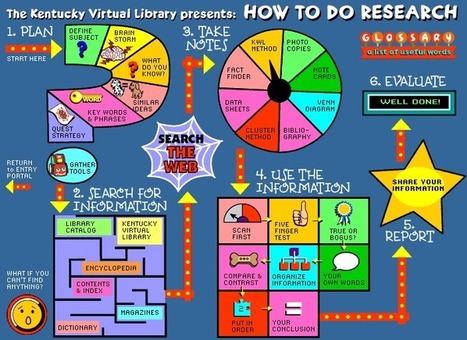Get Started for FREE
Sign up with Facebook Sign up with X
I don't have a Facebook or a X account
 Your new post is loading... Your new post is loading...
 Your new post is loading... Your new post is loading...

Steve Whitmore's curator insight,
August 14, 2015 8:05 AM
This is a great infographic for showing the thought process of finding information. 
Terry Yelmene's curator insight,
August 16, 2015 11:50 AM
A pretty well-reasoned, fundamental thought process for most knowledge work research. This serves as an even better backward (there-to-here) model to guide the core research workflow process automation a knowledge worker may want to devise, install. Think work product-informed -> DevonThink structures -> DevonAgent w/'Active Filtered' automated searches. The most important drivers here are - 'ethical' - (more than just multiple sources, a stage needs to be added at the work product stage to provide authenticity) and - 'bias' - (a post automated search, subsequent manual search for corroborating items selection to provide authority). corroborating

Steve Whitmore's curator insight,
August 14, 2015 8:05 AM
This is a great infographic for showing the thought process of finding information. 
Terry Yelmene's curator insight,
August 16, 2015 11:50 AM
A pretty well-reasoned, fundamental thought process for most knowledge work research. This serves as an even better backward (there-to-here) model to guide the core research workflow process automation a knowledge worker may want to devise, install. Think work product-informed -> DevonThink structures -> DevonAgent w/'Active Filtered' automated searches. The most important drivers here are - 'ethical' - (more than just multiple sources, a stage needs to be added at the work product stage to provide authenticity) and - 'bias' - (a post automated search, subsequent manual search for corroborating items selection to provide authority). corroborating |

Steve Whitmore's curator insight,
August 14, 2015 8:05 AM
This is a great infographic for showing the thought process of finding information. 
Terry Yelmene's curator insight,
August 16, 2015 11:50 AM
A pretty well-reasoned, fundamental thought process for most knowledge work research. This serves as an even better backward (there-to-here) model to guide the core research workflow process automation a knowledge worker may want to devise, install. Think work product-informed -> DevonThink structures -> DevonAgent w/'Active Filtered' automated searches. The most important drivers here are - 'ethical' - (more than just multiple sources, a stage needs to be added at the work product stage to provide authenticity) and - 'bias' - (a post automated search, subsequent manual search for corroborating items selection to provide authority). corroborating

Steve Whitmore's curator insight,
August 14, 2015 8:05 AM
This is a great infographic for showing the thought process of finding information. 
Terry Yelmene's curator insight,
August 16, 2015 11:50 AM
A pretty well-reasoned, fundamental thought process for most knowledge work research. This serves as an even better backward (there-to-here) model to guide the core research workflow process automation a knowledge worker may want to devise, install. Think work product-informed -> DevonThink structures -> DevonAgent w/'Active Filtered' automated searches. The most important drivers here are - 'ethical' - (more than just multiple sources, a stage needs to be added at the work product stage to provide authenticity) and - 'bias' - (a post automated search, subsequent manual search for corroborating items selection to provide authority). corroborating |














